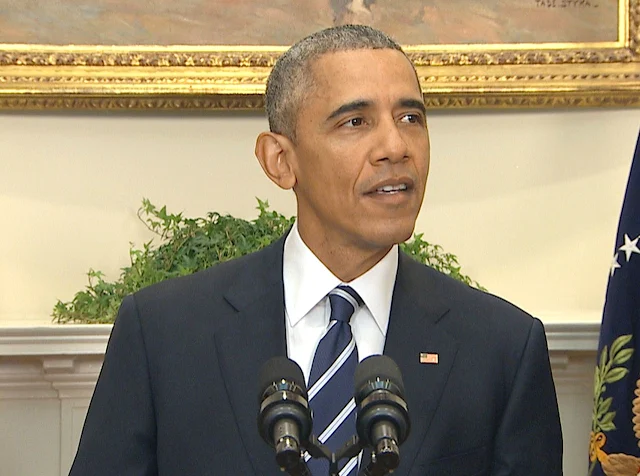If a moment can be the fulcrum of the future, it may have been today, when President Obama announced that the federal government would not issue a permit for the construction of the Keystone tar sands oil pipeline through the US.
It wasn't so much the pipeline itself as the reasons, the context, the timing and the ramifications.
The reason was that the pipeline adds nothing to the American economy, and adds too much to greenhouse gases--as Bill McKibben was quick to point out, making President Obama "the first world leader to turn down a major project on climate grounds."
The timing was with little more than thirty days to save the world--that is, before the Paris conclave on climate. This single act emphasizes American determination to lead the efforts to address the causes of global heating, specifically in Paris beginning at the end of this month. It adds even more credibility to President Obama's own leadership, and strengthens his hand at the negotiations, as Bloomberg put it.
The context was provided succinctly by President Obama's brief statement as he made the announcement, flanked by Vice-President Biden and Secretary of State John Kerry. He made a bit of other news, by relating a conversation with the new Prime Minister of Canada, Justin Trudeau, who officially (if not enthusiastically) backed the pipeline project, which would take Canadian oil through the US to be exported on ships. Trudeau "expressed his disappointment, given Canada’s position on this issue, we both agreed that our close friendship on a whole range of issues, including energy and climate change, should provide the basis for even closer coordination between our countries going forward. And in the coming weeks, senior members of my team will be engaging with theirs in order to help deepen that cooperation." This obviously refers to Paris.
The President began by rebutting the arguments that the pipeline would help the economy or lower gasoline prices. He got to note that today's employment report was unexpectedly strong--with job growth and a drop in the unemployment rate to 5%, the lowest since before the Great Recession. He contrasted the few jobs the pipeline might bring, to the thousands of jobs and longterm economic benefits of "a serious infrastructure plan" to repair and replace aging, inadequate and sometimes dangerous infrastructure.
The pipeline would not help American energy security. "What has increased America’s energy security is our strategy over the past several years to reduce our reliance on dirty fossil fuels from unstable parts of the world. Three years ago, I set a goal to cut our oil imports in half by 2020. Between producing more oil here at home, and using less oil throughout our economy, we met that goal last year -- five years early. In fact, for the first time in two decades, the United States of America now produces more oil than we buy from other countries."
Moreover the transition to clean energy is proceeding faster than "experts" ever believed. "Since I took office, we’ve doubled the distance our cars will go on a gallon of gas by 2025; tripled the power we generate from the wind; multiplied the power we generate from the sun 20 times over. Our biggest and most successful businesses are going all-in on clean energy. And thanks in part to the investments we’ve made, there are already parts of America where clean power from the wind or the sun is finally cheaper than dirtier, conventional power."
"The point is the old rules said we couldn’t promote economic growth and protect our environment at the same time. The old rules said we couldn’t transition to clean energy without squeezing businesses and consumers. But this is America, and we have come up with new ways and new technologies to break down the old rules, so that today, homegrown American energy is booming, energy prices are falling, and over the past decade, even as our economy has continued to grow, America has cut our total carbon pollution more than any other country on Earth."
Today, we’re continuing to lead by example. Because ultimately, if we’re going to prevent large parts of this Earth from becoming not only inhospitable but uninhabitable in our lifetimes, we’re going to have to keep some fossil fuels in the ground rather than burn them and release more dangerous pollution into the sky.
As long as I’m President of the United States, America is going to hold ourselves to the same high standards to which we hold the rest of the world. And three weeks from now, I look forward to joining my fellow world leaders in Paris, where we’ve got to come together around an ambitious framework to protect the one planet that we’ve got while we still can.
That's the fulcrum of the future.
And yes, the video does give the President a mantle of green leaves across his shoulders. I'm sure that was an accident.





















